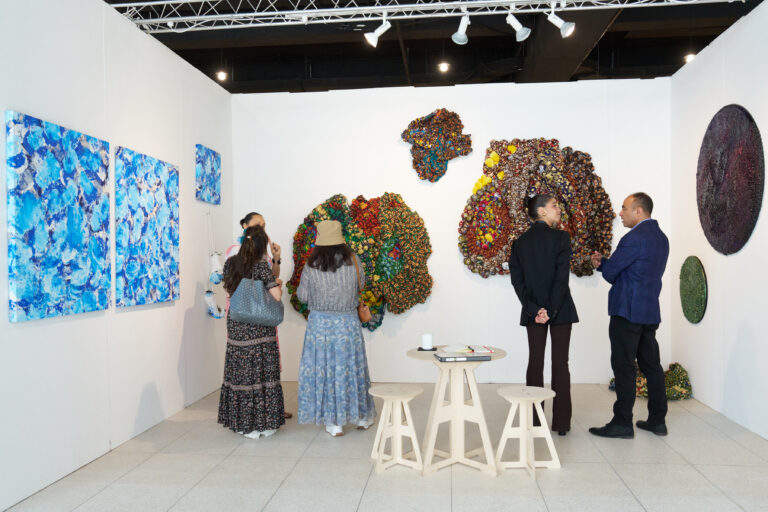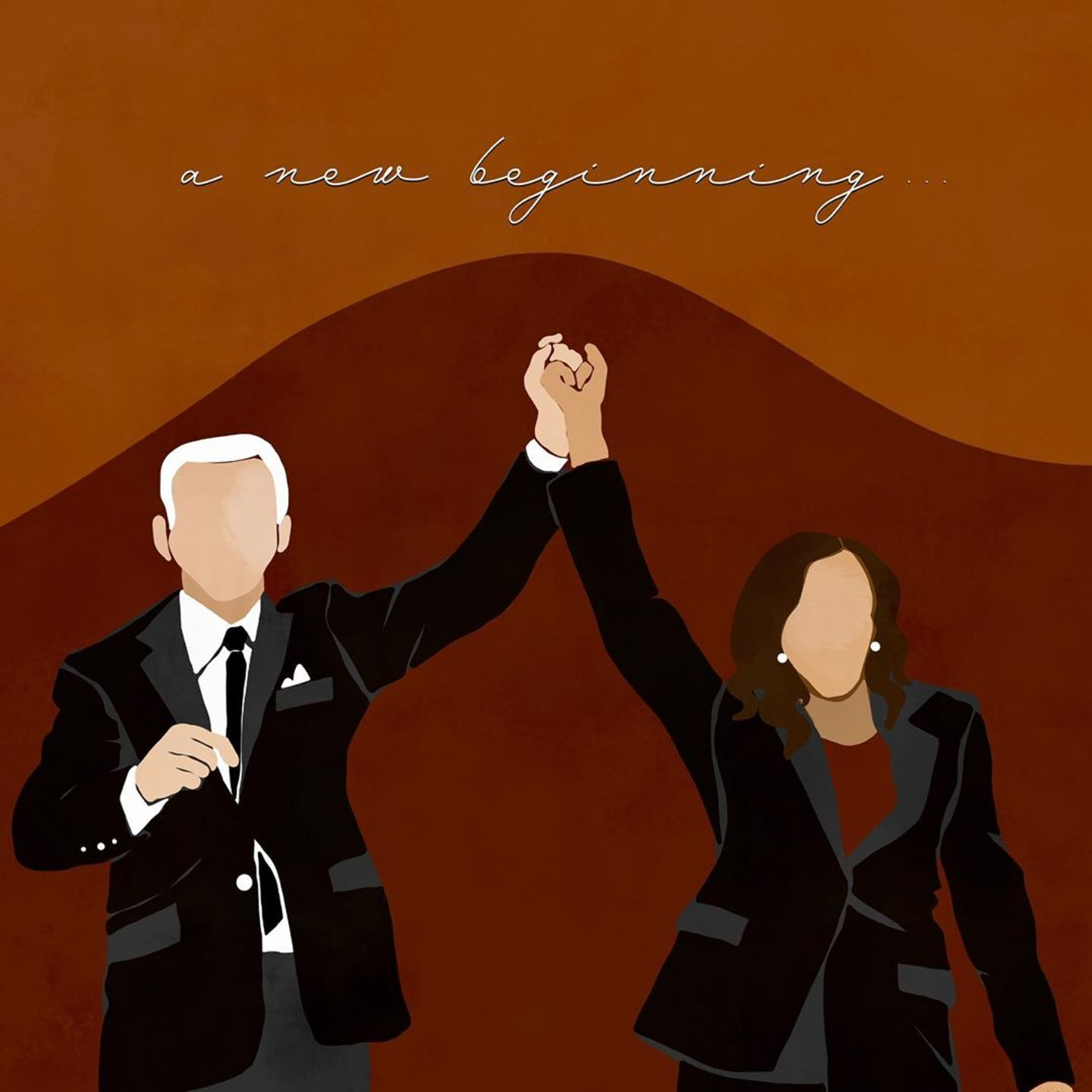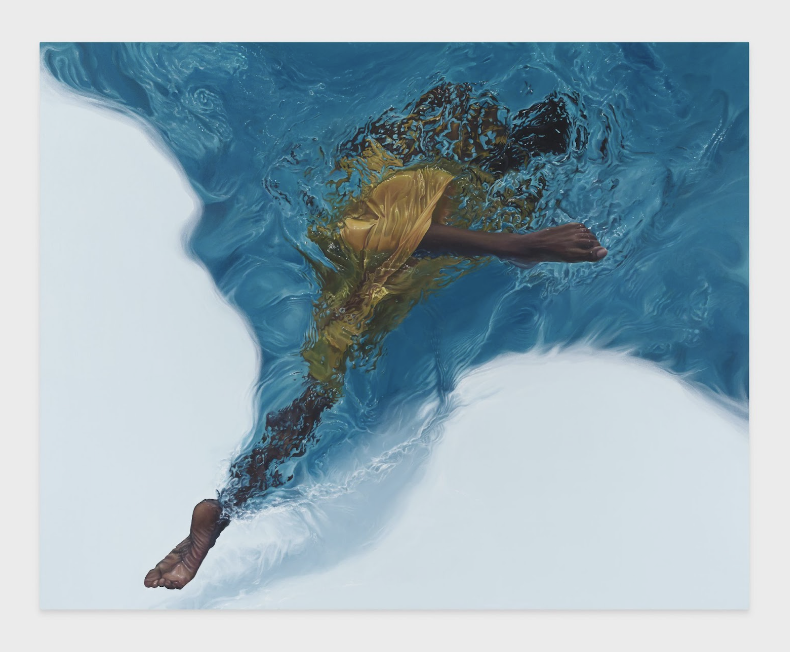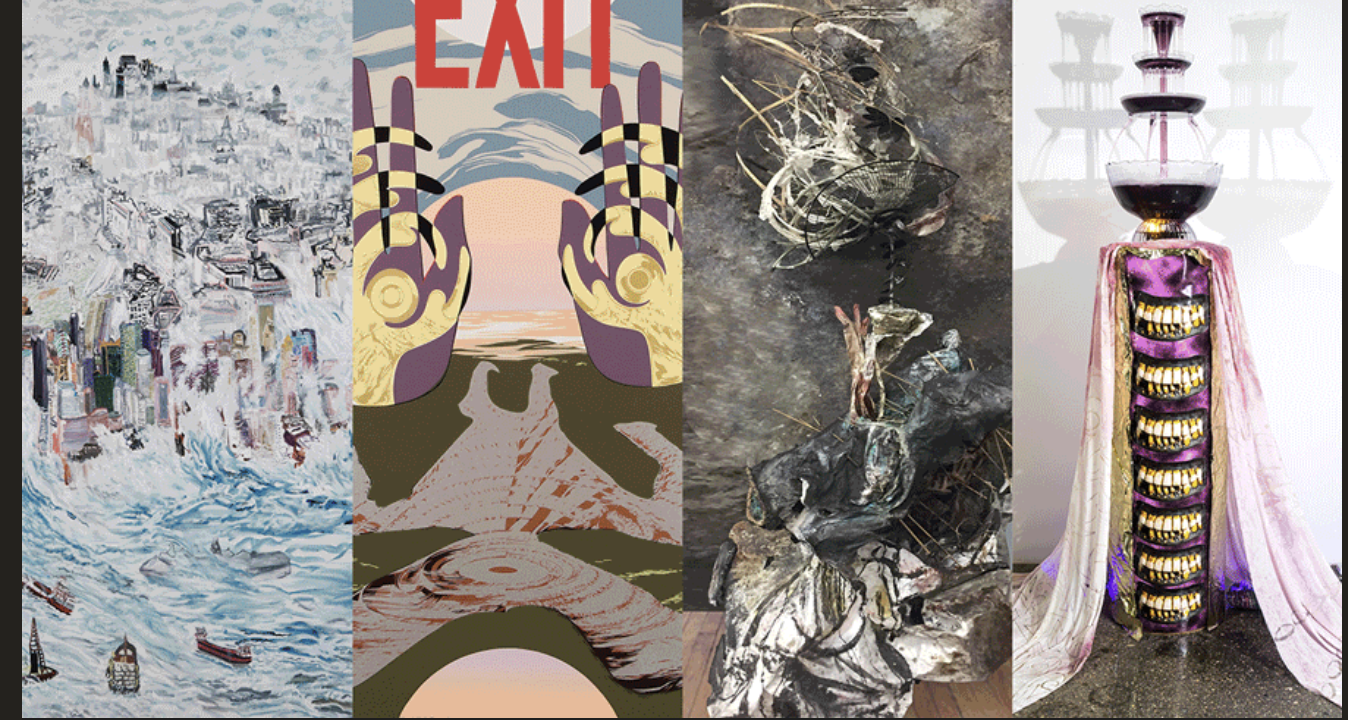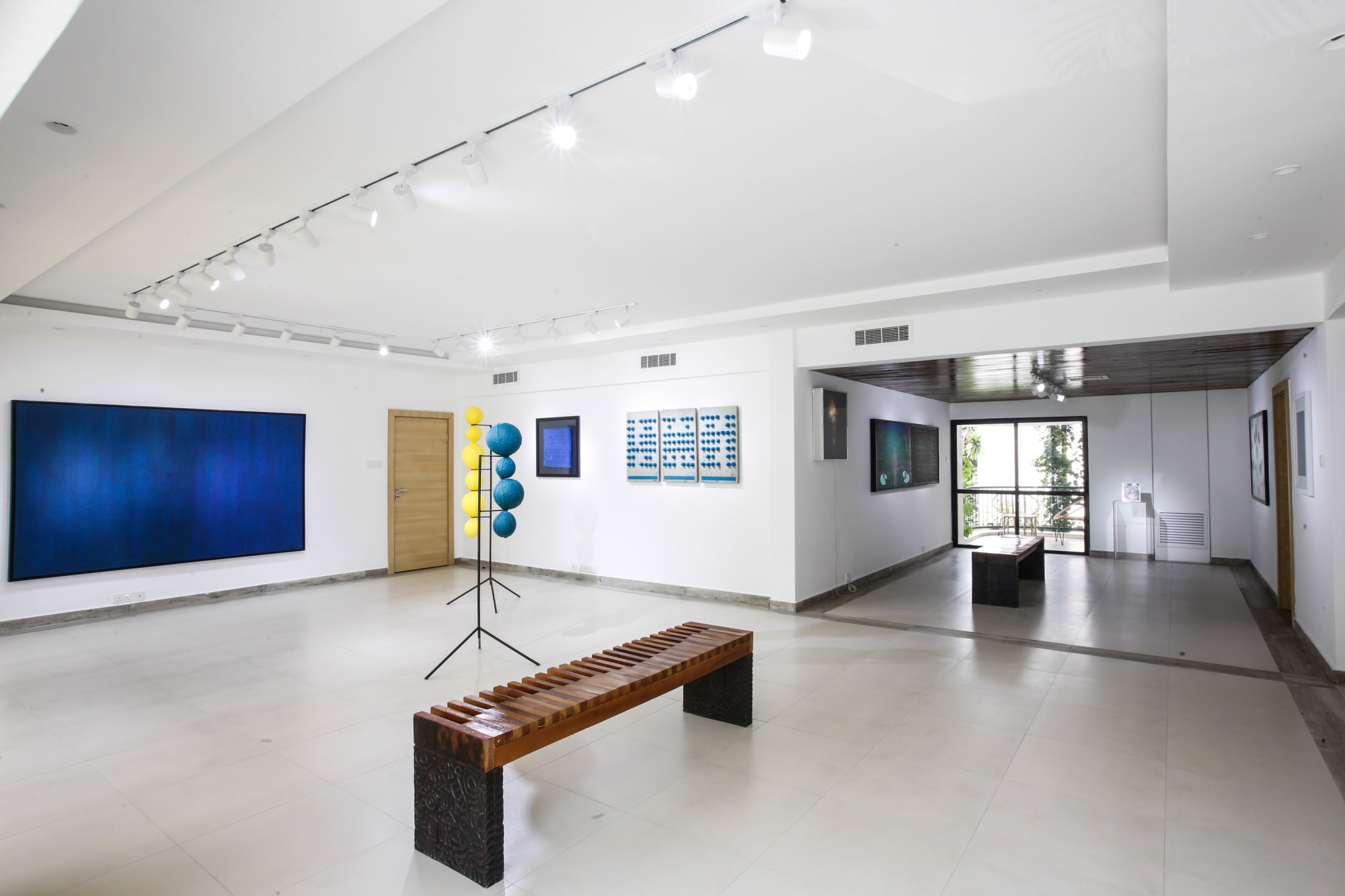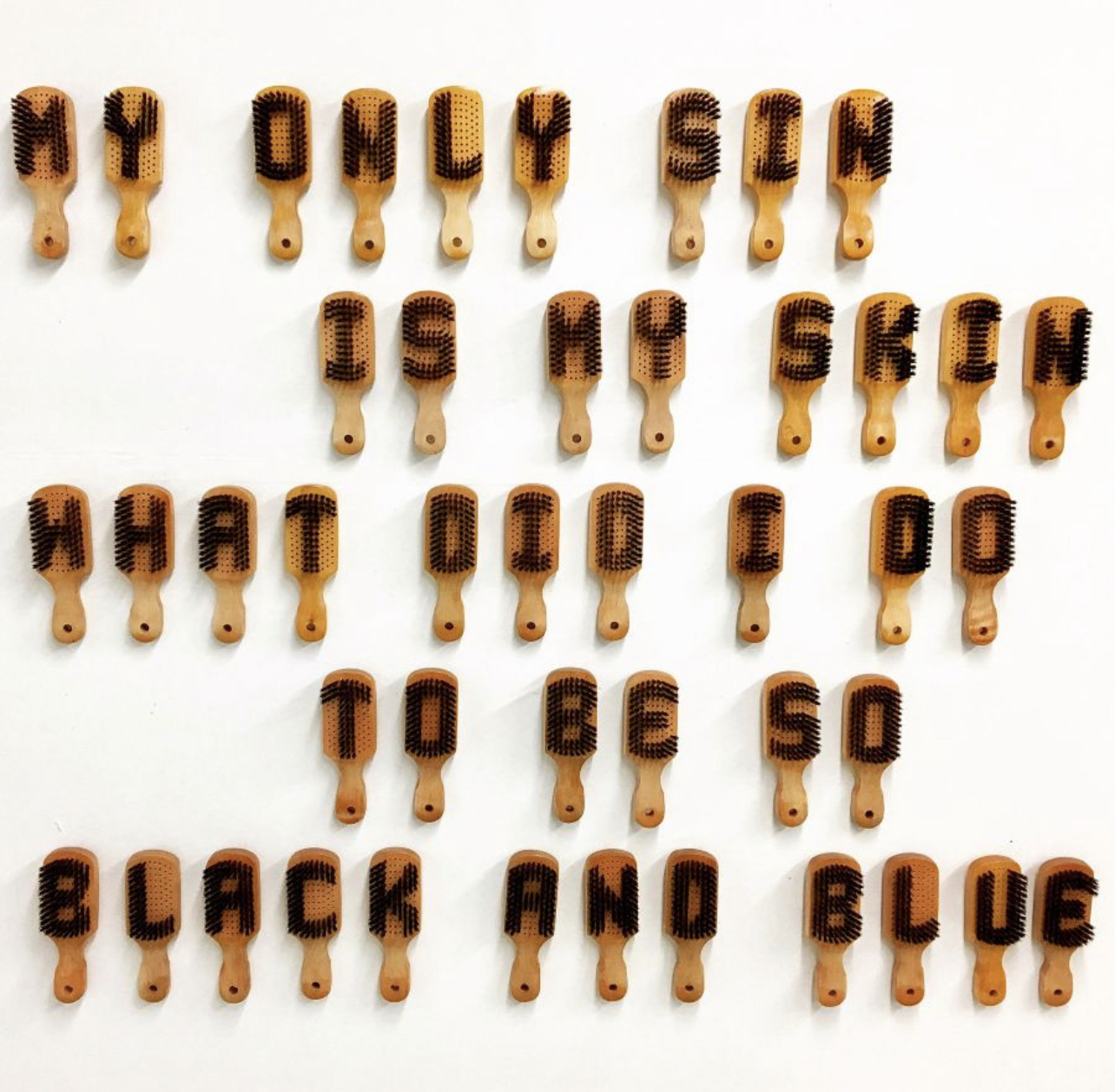Above: Work by Bria Nicole
This past year has been eventful to say the least, from COVID-19 to months of protesting, rampant wildfires and a historic presidential election. Joe Biden was officially announced president-elect on November 7… four days after Election Day. This was probably the most anticipated presidential election in history, as the entire world waited anxiously for days to hear the results. As the results of the election began to echo across the nation, the hope for a shift in the current state of America has become much more attainable.
For the past four years, we have experienced blatant racism, divisiveness, inappropriate behavior, a lack of regard for the health of Americans and incessant lies from a man who was supposed to be leading this country. It’s apparent that Trump’s “leadership” has caused more harm than good in the four years that he’s been president, and just one aspect of that damage is related to the arts.
Trump has had a long, sordid history with the arts dating back to the 1980s, when he decided to destroy a pair of art deco reliefs that were part of the façade of the Bonwit Teller building in midtown Manhattan in order to build Trump Tower. The Metropolitan Museum of Art, also known as The Met, wanted the reliefs for its collection. Although Trump agreed to donate them if the cost of removal wasn’t prohibitive, he still allowed his crew to destroy them.
Trump told the New York Times he was concerned with people’s safety, but he and his team hadn’t even reached out to The Met to ask how the sculptures could have been safely removed. This disregard for the arts has followed Trump through his entire career and right into his presidency.
During construction of Trump Tower, Trump commissioned Warhol to paint images of Trump Tower. Trump and Warhol had already met a handful of times throughout the 80s and Trump even visited Warhol’s factory. Warhol’s assistant, Christopher Makos photographed the architectural models of the building as the source images for Warhol’s portrait. Warhol created line drawings by tracing the photographs and burned them onto silk screens, creating an incredible series of multilayered paintings in black, silver and gold.
The commission had not been settled as the Trumps did not officially pay for any work, but Warhol felt confident. He showed them a total of eight portraits he did of the tower, but Trump was dissatisfied that it wasn’t color coordinated. He wanted it to match the pink and orange swatches of material he had used for the building. Despite Warhol’s efforts, the Trumps never paid for the portraits, leaving Warhol with a taste of resentment.

glitter, map pins, and elephant dung on canvas
Over the years, Trump has solidified his standing on being completely indifferent to the arts. He had been entertaining the idea of a presidential run since the late 80s. Even as early as 1999, he publicly made a stand for censorship and claimed that his presidency would cut funding for the arts. This was the same year that Mayor Rudolph Giuliani sought to reprimand the Brooklyn Museum for displaying Chris Ofili’s The Holy Mary Virgin (1996), which depicts Madonna in an array of materials including oil paint, glitter and elephant dung.
Giuliani stated that this wasn’t art because he could make it himself, a notion that Trump fully supported. Trump even released a statement saying, “As president, I would ensure that the National Endowment of the Arts stops funding this sort,” going as far as to say, “It’s not art. It’s absolutely gross, degenerate stuff.”
Although Trump implicated the National Endowment for the Arts (NEA) for funding Ofili’s piece, they did not provide any funding to the Brooklyn Museum’s show. Trump’s effect on the NEA has been tangible. In 2013, Trump took over the lease of the Old Post Office on Pennsylvania Avenue in Washington,D.C. in order to build a large hotel. The occupants forced to leave the premises were the NEA as well as the National Endowment for the Humanities (NEH). Trump has ravaged the art community for years and continued this trend throughout his presidency.
In 2008, Obama established a thoroughly outlined platform for supporting the arts, which included increased funding for the NEA as well as health care and tax fairness for artists. Trump singlehandedly sought to destroy everything Obama implemented to protect the arts during his presidency. He is devoted to stripping cultural agencies of their funding, presenting budgets for four consecutive years that would make obsolete both the NEA and the NEH.
Trump’s 2021 budget requested $30 million and $33.4 million to shut down the NEA and NEH completely as well as the Institute of Museum and Library Services and the Corporation for Public Broadcasting, in addition to discontinuing a number of arts education programs in the Department of Education budget.
With President-elect Joe Biden and Vice President-elect Kamala Harris, what do the next four years mean for the arts? The arts played a strong role under the Obama-Biden administration and many observers from multiple U.S. cultural institutions expect this trend to continue. Although Biden will probably not turn out to be as culturally influential as Obama, he is still a loyal supporter of the arts.
As a senator from Delaware, Biden has consistently supported arts funding and voted for legislation favored by arts execs. Harris also has demonstrated her commitment to the arts by serving on the board of trustees of the San Francisco Museum of Modern Art. She even has been a member of the San Francisco Jazz Organization and a chairperson for the city’s symphony fundraiser.
Although the Biden transition team has not officially announced a formal platform for the arts, unlike Trump’s administration, it is more than likely that they will actually have one. For the past four years, arts and culture have been stifled by the resistance of the Trump administration. While a new president doesn’t necessarily relieve current pressures—the pandemic, the climate emergency and race relations—facing the country and shaping art, a Biden administration will at least offer a little solace and movement forward. As President-elect Biden put it earlier this year, “The future of who we are lies in the arts. It is the expression of our soul.”
